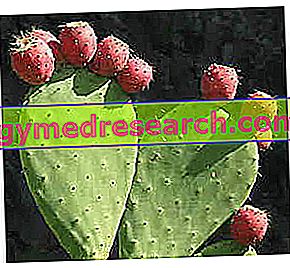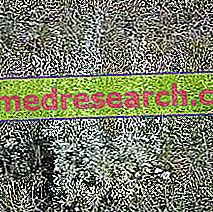Generality
The prickly pear ( Opuntia ficus-indica L.) is a vegetable belonging to the Cactaceae family, the same as the cactus and other succulent plants. The prickly pear is therefore a succulent plant, which can exceed 3m in height and which produces highly appreciated edible fruits.
 | ||||||||||||||||||||||||||||||||||||||||||||||||||||||||||||||||||||||||
| Nutritional composition of Fico D'India - Reference values of INRAN Food Composition Tables | ||||||||||||||||||||||||||||||||||||||||||||||||||||||||||||||||||||||||
 | ||||||||||||||||||||||||||||||||||||||||||||||||||||||||||||||||||||||||
Nutritional values (per 100 g of edible portion) | ||||||||||||||||||||||||||||||||||||||||||||||||||||||||||||||||||||||||
| ||||||||||||||||||||||||||||||||||||||||||||||||||||||||||||||||||||||||
The segments of the stem / stems are called cladodes (ellipsoidal and flattened) and are able to perform all the vital processes normally entrusted to the leaves (chlorophyll photosynthesis); from them the flowers and fruits of the prickly pear differ; not only that, in addition to having a variable number of thorns, according to specific needs, cladodes can give rise to real roots able to take root quickly. Not by chance, the simplest method to cultivate a prickly pear is not to sow, but to directly plant a cladode in the damp earth, which will take root in a very short time.
The fruits of the prickly pear are berries containing many seeds; they have variable shape (round or elongated) and a weight that with fatigue can approach 400g. They too appear covered with more or less evident thorns, including the glochids, tiny spines that are particularly insidious and difficult to remove once they are stuck in the skin; it is well known the difficulty in peeling the prickly pear without the use of gloves.
The prickly pear is native to Mexico but, given its resistance and relative ease of cultivation, following the discovery of the Americas and subsequent trade (between the fifteenth and sixteenth centuries), it was successfully imported into many countries of the Mediterranean basin (as well as in Asia and Oceania); so much so that today the prickly pear is considered the main summer food of the North African populations.
Many attribute to the prickly pear nourishing and beneficial properties, among which: pulp laxative, astringent of seeds and antioxidant (vitamins and tannins). In reality the effect of prickly pear on the intestine is of the modulator type, thanks to the presence of viscous fibers such as pectin and mucilage in the pulp, and of other mainly astringent active ingredients contained in the seeds (which, however, are not thoroughly chewed). and often do not significantly affect).
NB . Prickly pear, if consumed in large quantities, can dye the urine of a reddish color.
Nutritional characteristics
Prickly pear is a medium energy fruit, which provides a fair amount of fructose (simple carbohydrate) and good fiber portions, mineral salts and vitamins.
In particular, the prickly pear cactus contains excellent amounts of viscous fiber, useful for the regulation of intestinal absorption and fecal transit itself. The potassium intake is appreciable, as well as that of antioxidants.
The consumption of prickly pear is therefore comparable to that of other fruits common in Italy.
NB. Prickly pear, being rich in small seeds, is a food strongly contraindicated in the pathology of diverticulosis.


